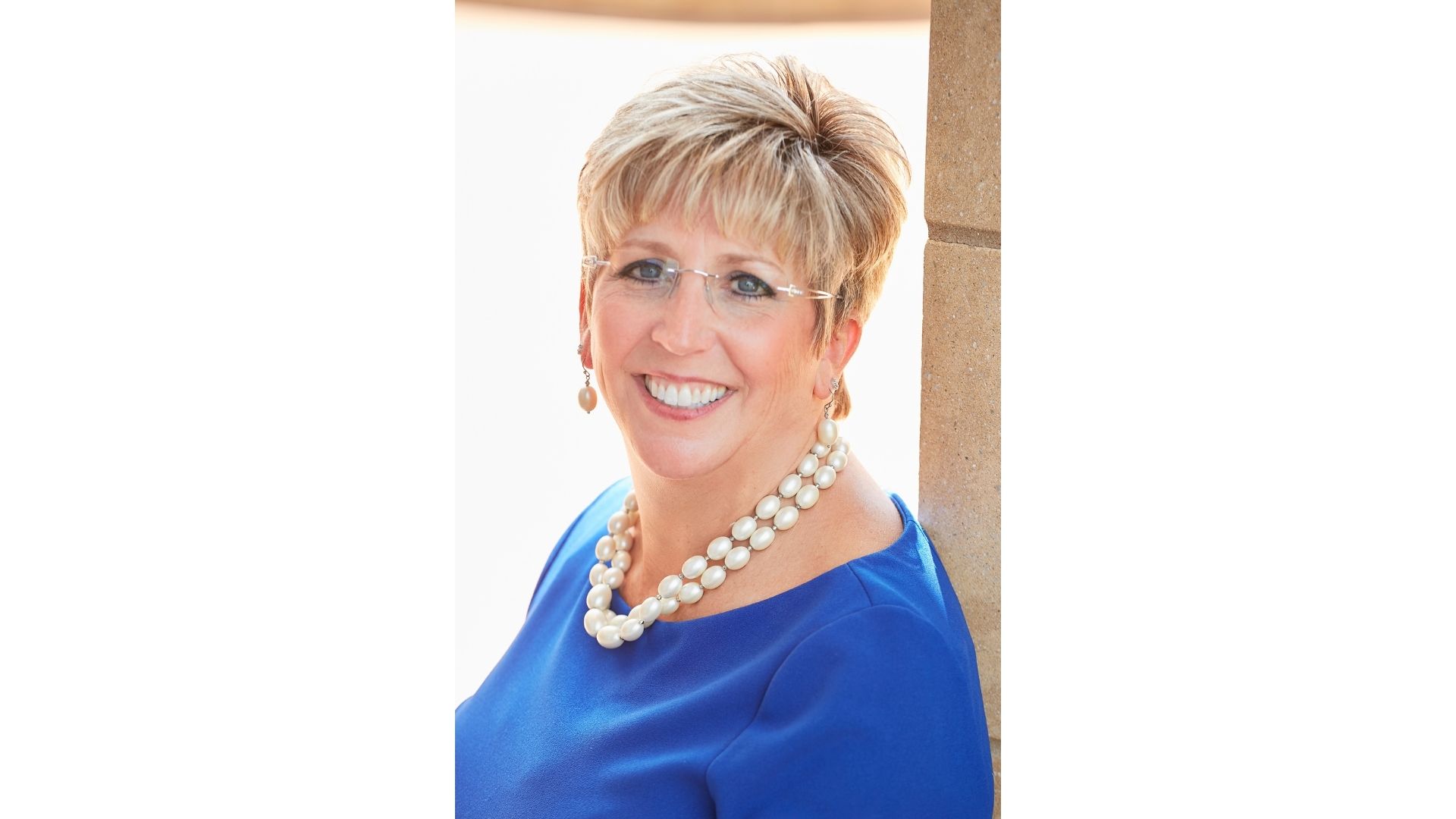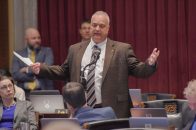The Missouri Times chatted with Dr. Angie Besendorfer, chancellor of Western Governors University (WGU) Missouri, about alternative learning methods as the state continues to face a teacher shortage.
WGU has utilized competency-based learning, an education method based more on proficiency than time spent in a classroom for more than 20 years. After more than 30 years in the education field, Besendorfer said the method allows students to progress through their courses and graduate faster and could attract more applicants to the field.
Below is the conversion between Besendorfer (AB) and The Missouri Times (TMT) with answers edited for clarity only.
TMT: What does competency-based learning entail, and how can it affect the state’s teaching sector?
AB: Competency-based education focuses on measuring learning and comprehension instead of time spent in the classroom. In order to implement competency-based learning, educators first define the key competencies that must be mastered by learners to pass a given course. Students then interact with learning resources and faculty to learn the competencies at their own pace, which means they are allowed to prove mastery of competencies as quickly as they can. This enables students to accelerate course completion and earn their degree much faster than traditional means. Competency-based learning, when implemented with fidelity, ensures all students earning credentials have mastered the content at a high level. This model is also effective in the PK-12 sector and allows educators to respond to the varying skill levels of students in a more personalized and consistent manner.
Competency-based education – when paired with affordable college tuition – addresses several barriers that often prevent many working adults interested in a teaching career from taking the steps to earn their college degree. Those barriers can range from not having time to sit in a classroom because they are working and raising families, to simply lacking the financial means to return to school. When offered in an online learning environment, competency-based education can reach and attract aspiring teachers in rural and underserved areas of Missouri or those who need to continue to work while earning a degree. Competency-based education can also help grow the careers of existing teachers, who often need a master’s degree or higher to maximize earning potential – something that is critical to retaining current teachers.
TMT: What other states are turning to alternative education methods, and how are they faring?
AB: There are examples of quality competency-based learning programs across the nation at all levels of education. Many colleges and universities across the country are implementing innovative learning models to meet the needs of individual learners and graduate more students. Addressing the differences of learners is important to ensure every student is achieving to their highest possible level. Competency-based learning, for example, is a proven strategy that Western Governors University has been developing and refining for almost 25 years nationwide and since 2013 in Missouri, when a university affiliation was established by Gov. Jay Nixon. As the experts in competency-based learning in higher education, WGU has been involved in several grant projects and worked with others in the education sector to share the key pillars of quality, competency-based models in both the university and K-12 settings. According to a 2019 American Institutes for Research study last year, 51 percent of institutions had adopted CBE for one or more programs, although very few have embraced the model widely across their institutions to date.
What’s very interesting is what is happening at the K-12 level, where states are beginning to recognize the value of alternative education models for younger students. New Hampshire, Vermont, Maine, and Ohio all stand out as early adopters to promote alternative education in schools. In 2005, New Hampshire became the first state to remove seat time as a requirement in favor of a competency-based system, and as a result, student engagement has improved and the state’s dropout rate dropped significantly, from 2.5 percent in 2007-08 to 1.02 percent in 2018-19. School districts in Ohio are also required to allow high school students to earn credit based on their demonstrated competency in a subject area – rather than completed hours of classroom instruction. Graduation requirements in Vermont and Maine have also changed to reflect student proficiency in core subjects. Missouri has also made significant strides in supporting the implementation of competency-based learning in the K-12 sector.
TMT: How did WGU’s competency-based initiative come about? What results have you seen?
AB: The idea for WGU to implement a competency-based learning model was driven by our initial focus on adult learners who already had some life experiences often within their fields of study. When considering these learner qualities, it was noted that many will have learned key competencies outside the classroom. One of the governors who helped found WGU was a pilot and had trained new pilots. His experience noted that some new pilots mastered the skills well before the mandatory time requirement for flight school, while others could have used more time. These two factors came together as one of the foundational principles of WGU and are the reason why the university honors the measurement of learning rather than seat time. Allowing students to move through their coursework as quickly as they can have resulted in students taking a significantly shorter time to earn a degree. At WGU, the average time to a bachelor’s degree is two years, three months. The competency-based model, coupled with WGU’s flat-rate tuition that is based on time rather than credit hours, results in an average cost for a bachelor’s degree of around $17,000. Data at the national level shows the average WGU graduate increases their pre-enrollment salary by $11,800 within two years of graduation and by $20,300, within four years, and 87 percent of graduates work in their intended field.
TMT: How has the pandemic impacted the demand for teachers and the shift to alternative certification routes?
AB: The pandemic has certainly impacted the future teacher pipeline in a negative way, adding pressure to a system that was already experiencing a workforce shortage. The need for high-quality teachers goes without saying, but the systems to ensure quality, while addressing workforce needs, often conflict. As such, many states – including Missouri – are expanding opportunities for licensure through alternative routes. WGU, which graduates more teachers nationwide than any other institution, is a key player in maintaining the quality preparation of teachers while providing alternative routes to teaching. For instance, at WGU students can continue working while they are going to school full-time, up to the point of student teaching. This opens the door for adult learners to join the teaching ranks, which is very difficult to do in the traditional model. In addition, WGU offers certification programs at the master’s level for those individuals who discover they have a heart for teaching after they have already earned a bachelor’s degree. To ensure every child has a quality teacher, we must become very strategic in addressing the teacher shortage without sacrificing proper preparation.
TMT: How did the teacher shortage become an issue?
AB: While many of us as adults look at school as if it has stayed the same, there are many differences that have occurred over the last 50 years. Schools are doing a much better job of meeting the needs of individual learners, which requires more qualified educators working with both large and small groups of students. Across the U.S., we are also seeing an increase in student enrollment, which leads to an increased demand for teachers. Over the next decade, the National Center for Education Statistics predicts the student-going population will increase by approximately one million.
Zeroing in on Missouri, the U.S. Department of Education designated 17 academic disciplines as facing critical teacher shortages across the state for the 2021-2022 school year. The largest shortages, being seen across more than 50 counties in Missouri, are in the areas of Science, Physics, English Language Arts, Social Studies, Special Education, Physical Education, Spanish, Mathematics, and Elementary Education. Teacher shortages are being seen in both rural and urban areas – affecting grade schools, middle schools, and high schools. As a result, schools often have to look to unqualified teachers to fill some of these vacancies or remove some of the curricula altogether.
The increase in available positions for certified teachers is coupled with many more career alternatives for women who had fewer career options in the past. Additionally, many other careers have greater earning opportunities. The good news is that those with the heart and passion for teaching who first went to other careers now have more routes back to the classroom, but we will need more people choosing to teach in order to fill the gap between openings and licensed educators in the future.
TMT: What is the outlook for the state if the teacher shortage situation doesn’t improve?
AB: Our youth represent the future of Missouri’s workforce. It’s the educators in our state who prepare them for the jobs they will fill in their lifetimes. We need to ensure that all students are afforded a quality education delivered by high-quality teachers. If the shortage situation doesn’t improve, we may see neighboring states begin to raise teacher salaries in an effort to import talent from Missouri, which would make matters worse and create an issue for all industries in the state in the future. If we don’t solve the existing issues that make it difficult to attract individuals into teaching, then that issue will be the tip of the iceberg for the workforce challenges in the state.
TMT: Based on your work in technology-focused learning strategies and your time in the education field, what could Missouri legislators and DESE do to help address the teacher shortage?
AB: There are many ideas around salary and working conditions that are always mentioned when it comes to addressing the teacher shortage. Outside of those options, focusing in on how future educators pay for their college education by creating alternative funding options that will allow future educators to avoid debt altogether could be one solution. Additionally, a focus needs to be placed on supporting paraprofessionals with a path to licensure and creating incentives for students with bachelor’s degrees in other areas to move into teaching as these two groups can more quickly fill the vacancies.
Assessing the policies for what is required to become a certified educator can also clear the path for individuals to become teachers. State licensure requirements should also be examined to ensure there aren’t mandates around the model of education, requirements that hamstring hybrid and solidly designed online models. An analysis of licensure reciprocity requirements can ensure that Missouri is a positive destination for talented teachers, not one that makes them jump through bureaucratic hoops. Finally, if we do get to a point that we need emergency provisions, we must be careful to ensure the journey to licensure maintains quality. For instance, emergency provisions could focus on paraprofessionals becoming teachers of record if they are enrolled in an accredited program.
On the education front, more work will need to be done to attract others to the teaching profession to combat the issue of declining enrollment in teacher preparation programs in Missouri. DESE and legislators will need to work with educators to ensure high-quality, affordable competency-based education and other alternative education options are accessible to students who don’t fit the traditional college mold. Doing so will provide faster paths to bachelor’s and master’s degrees in education and can certainly help with teacher recruitment and possibly even long-term teacher retention.

Cameron Gerber studied journalism at Lincoln University. Prior to Lincoln, he earned an associate’s degree from State Fair Community College. Cameron is a native of Eldon, Missouri.
Contact Cameron at cameron@themissouritimes.com.




















